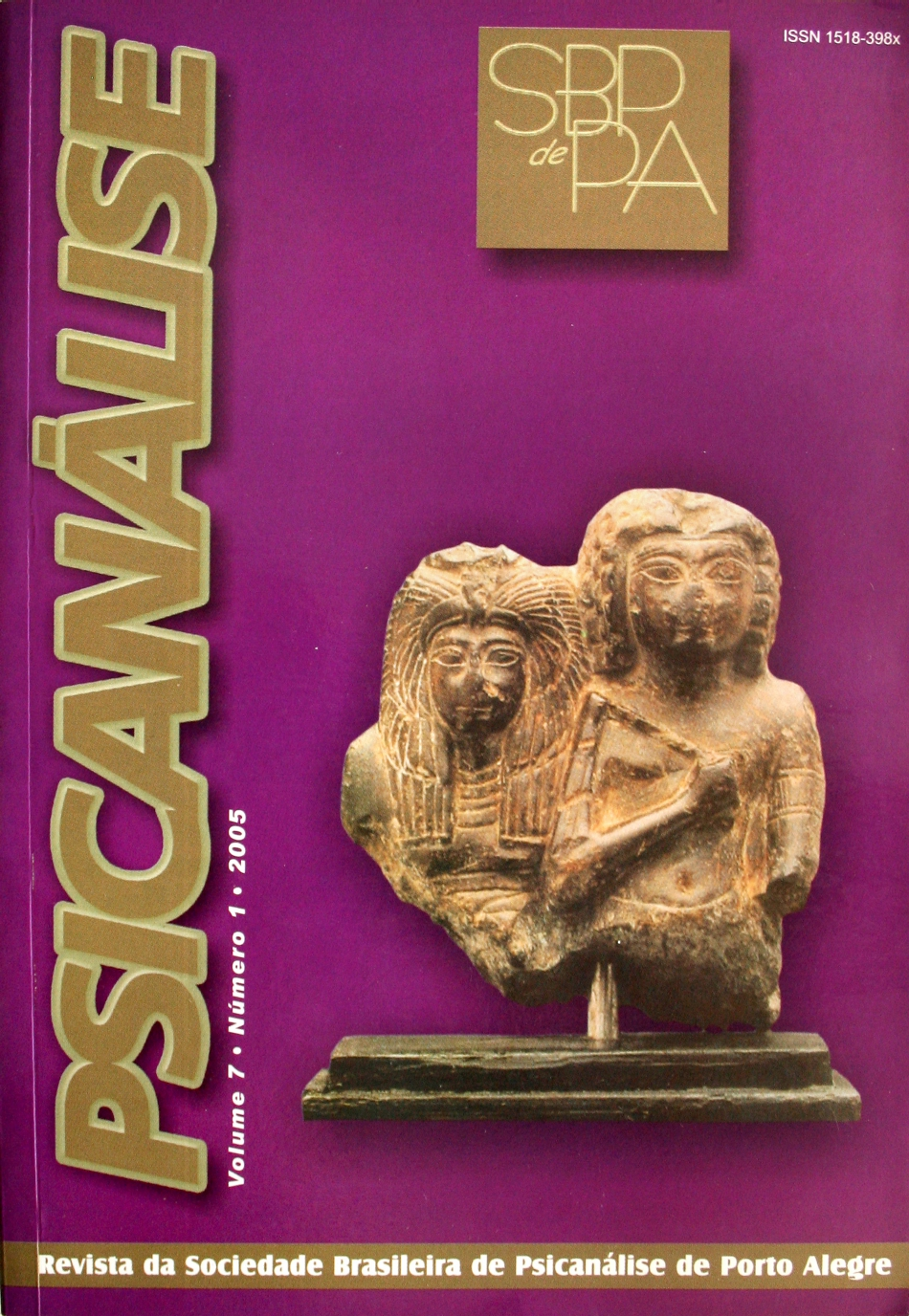The containing role of sonorous interpretation elements
DOI:
https://doi.org/10.60106/rsbppa.v7i1.180Keywords:
Listening, Voice, Interpretation, Container, SemanticsAbstract
In this paper I underscore the significance of the various aspects of the voiceof the analyst as part of the setting and containing function of the psychoanalyticsituation specially in the case of very disturbed patients who need to reaffirm timeand again that they have not destroyed the object. I argue that interpretation iseffective when it can merge its two components, the semantic, on the one hand,and the phonetic as well as the non verbal elements involved in uttering theinterpretation. Both will make possible the incorporation of a process ofsymbolization that will give rise to the fracture of narcissistic organizations andhence enable future elaborations. Through clinical vignettes, I underline theimportance of the holding function, since many of these patients have had severe maternal deficiencies that bring about a feeling of void and absence. The presence,the voice and the attitude of the analyst constitute and important part of the setting,which alongside the analyst’s interpretation will create a “special language” specificto every patient-analyst dyad. These elements will constitute a dynamic unit thatwill help the patient to grasp his/her truth, and thus both develop and grow.Downloads
References
ANZIEU, D. L’Enveloppe Sonore du Soi. Nouvelle Revue de Psychanalyse, Paris, n.13, p.161-180, 1976.
BICK, E. The Experience of the Skin in Early Object Relations. International Journal of Psychoanalysis, London, v.49, p.484-486, 1968.
BION, W. Aprendiendo de la Experiencia. Buenos Aires: Paidós, 1975.
FERRO, A. Comunicação de Gramado, 2000.
FREUD, S. (1895). Proyecto de una Psicología Científica. In:______. A.E. v.2.
______. (1900). La Interpretación de los Sueños. In:______. A.E. v.4.
ETCHEGOYEN, H. Teoría de la Técnica. Buenos Aires: Amorrortu, 1986.
GRIMBERG, L. An Approach to the Understanding of Borderline Patients. In: BORDERLINE CONDITIONS. Topeka, Kansas: The Menninger Foundation, 1976. Painel.
KERNBERG, O. Psychotherapy with Borderline Patients. New York: Basic Books, 1987.
LEAVY, S. A. Speaking in Tongues: some linguistic approaches to psychoanalysis. The Psychoanalytic Quarterly, New York, v.52, p.34-55, 1983.
MAHLER, M. Thoughts about Development and Individuation. The Psychoanalytic Study of the Child, New Haven, v.18, p.307-324, 1963.
MELTZER, D. et. al. Explorations in Autism. Strathcyde: Clunie Press, 1975.
OLINICK, S.L. Psychoanalysis and Language. Journal of the American Psychoanalytic Association, New York, v.32, p.617-653, 1984.
ROSEN, V.H. Sign Phenomena and their Relationship to Unconscious Meaning. International Journal of Psychoanalysis, London, v.50, p.197-207, 1969.
SEARLES, H. My Work with Borderline Patients. London: Jason Aronson, 1986.
Downloads
Published
How to Cite
Issue
Section
License
I attribute the copyrights that belong to me, on this work, to SBPdePA, which may use and publish it by the means it deems appropriate, including on the Internet or in any other computer processing.
















